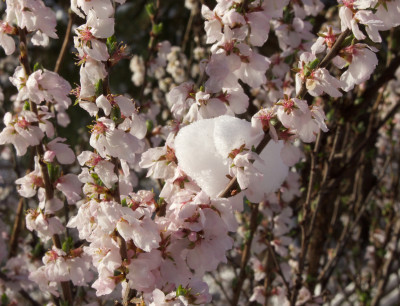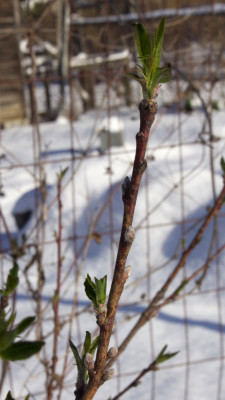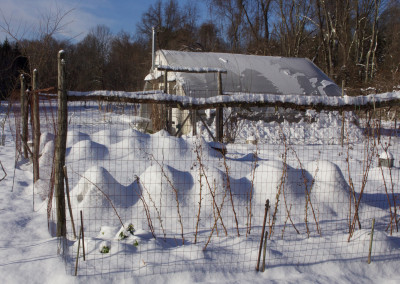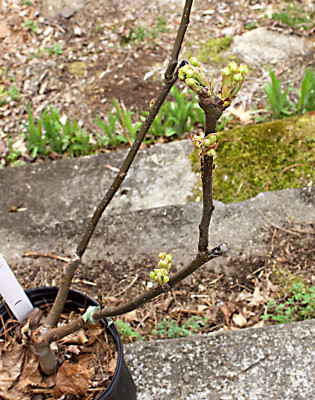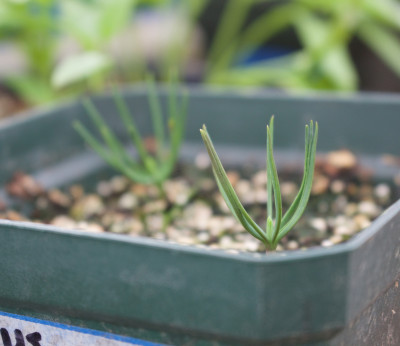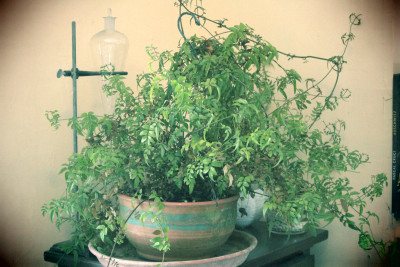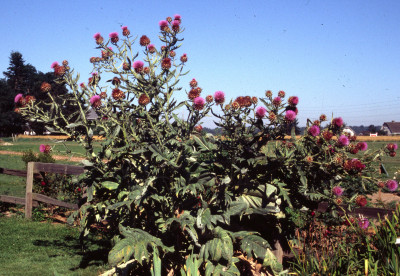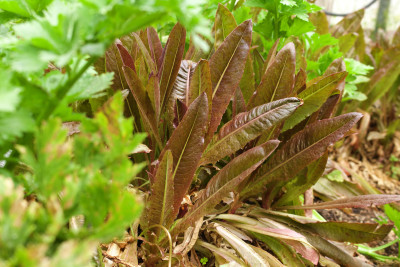SUMMER WEATHER, PLANT THE GREENHOUSE
Ginger on the Way
Now that summer-y weather has blown in and is here to stay, it’s time to plant the greenhouse. Plant the greenhouse?! This time of year? Yes. No reason to let all that real estate go to waste through summer.
Ginger plants that I started from supermarket tubers a couple of months ago were crying out to be released from the confines of their 4-inch pots. Warming their bottoms on the seed-starting heating mat pushed them along even when early spring skies were overcast and the greenhouse relatively cool. Ginger is a tropical plant that shivers even when temperatures drop below 55°F.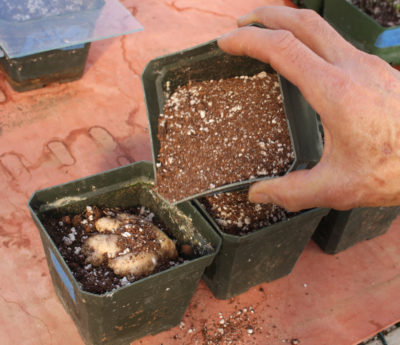
I never could see the rationale for the current interest in growing ginger in northern regions. That is, until I tasted freshly harvested, baby ginger. This far north, ginger rarely has time to develop the mature, tan-skinned roots you see in supermarkets. No matter, because immature, or “baby,” ginger, which is ginger harvested before it matures, is better — a white, tender, tasty tuber. It doesn’t keep or ship as well as mature ginger, which is no problem for backyard growing or local sales.
So 4 ginger plants went into two greenhouse beds. I’ll dig up the ginger in September, freeing up space for lettuce, celery, kale, and other cool weather salad makings that will inhabit the winter greenhouse.
Early Curcurbits
One can eat only just so much ginger. (We’re still using last year’s harvest which, for long term storage, was sliced thin and put into jars with vinegar.) What about other greenhouse beds that are being vacated as the last of winter’s lettuce, celery, kale, and chard get harvested and cleared away?
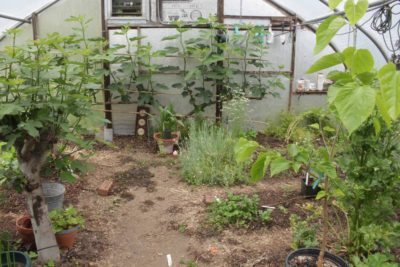 Cucumbers and melons love heat, so a few extra plants that I started back in early May went into beds.
Cucumbers and melons love heat, so a few extra plants that I started back in early May went into beds.
The permanent fixtures in the greenhouse, the plants that really help the greenhouse earn its keep, are the four fig trees — Bethlehem Black, San Piero, Brown Turkey, and Rabbi Samuel — planted right in the ground. The largest of these has a trunk 7 inches in diameter. All yield bountiful crops daily in August and September, and less bountiful ones going into October.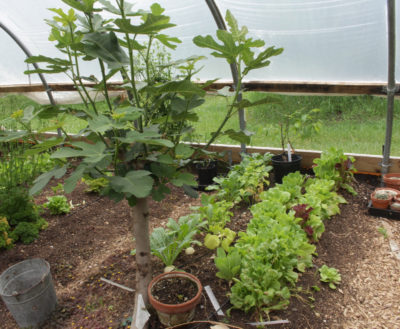
Tropicals and Subtropicals Summer Vacation
In a reversal of fall, tropical and subtropical plants that had been moved into the greenhouse and house are now lined up outdoors, ready to offer fresh black mulberries, Pakistan mulberries, pineapple guavas, pomegranates, Golden Nugget mandarins, olives, dwarf Cavendish bananas (probably no fruit from this one, just a very tropical look), and a few other varieties of figs, in pots.
(My black mulberry is the species Morus nigra, one of the best-tasting of all fruits, but is not cold hardy here. Black-colored mulberries that grow all over the place outdoors here are, despite black fruits, species of red or white mulberries, or their hybrids.)
Any of my tropical and subtropical plants, given their druthers, would reach 8 feet, 10 feet, or even more feet skyward, and spread their roots many feet in all directions. Here, they can’t do that or they would be too big to move or to house in winter.
So I mixed up a batch of potting soil, and started root pruning. It sounds brutal, and it is, but plants recover nicely and then happily have new soil to explore. Basically, I slide a plant out of its pot, stand it upright, and then start slicing off the outer edges of the root ball. Pruning shears take care of any roots too large to slice with a knife.
The finished root ball is an inch or two smaller in diameter than it started out. How much to remove depends on the initial size of the root ball — larger plants get more removed — and, to a lesser degree, the kind of plant. Figs, for instance, tolerate especially brutal treatment.
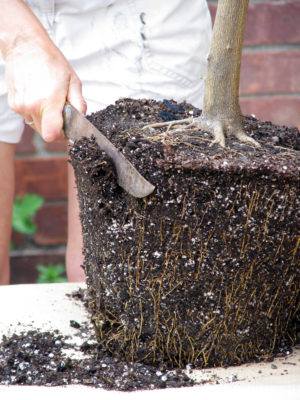 So much for the roots. To keep it manageable, the plant also needs stem reduction. Some stems get shortened, some are removed in toto, and some are left untouched. Who gets what treatment depends, for fruiting plants, on their fruiting habit — just where and how they bear fruit. Figs that bear on new shoots can be pruned rather severely; pineapple guavas bear on new shoots growing off older stems, so only moderate pruning is tolerated so that some older stems are preserved, etc.
So much for the roots. To keep it manageable, the plant also needs stem reduction. Some stems get shortened, some are removed in toto, and some are left untouched. Who gets what treatment depends, for fruiting plants, on their fruiting habit — just where and how they bear fruit. Figs that bear on new shoots can be pruned rather severely; pineapple guavas bear on new shoots growing off older stems, so only moderate pruning is tolerated so that some older stems are preserved, etc.
After root and shoot pruning a thorough watering, plants are ready for a year or two of good growth before they will again feel constrained.

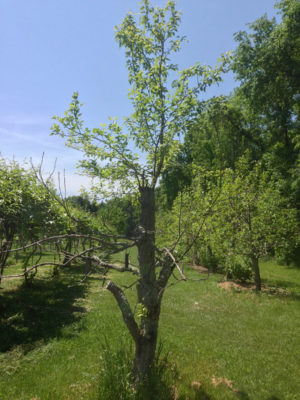
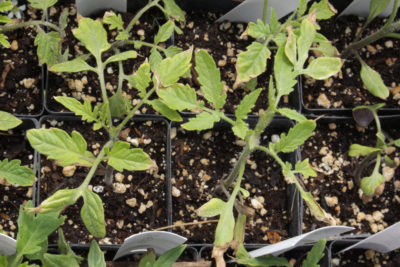 And every season I’ve had sturdy, lush green transplants to set out over the past few weeks. Not this season. Too many of the transplants are stunted, with flaccid leaves that are not uniformly lush green. Some have slight, interveinal yellowing of oldest leaves, some have slight reddening of veins, hinting, respectively, at insufficient nitrogen and phosphorus uptake .
And every season I’ve had sturdy, lush green transplants to set out over the past few weeks. Not this season. Too many of the transplants are stunted, with flaccid leaves that are not uniformly lush green. Some have slight, interveinal yellowing of oldest leaves, some have slight reddening of veins, hinting, respectively, at insufficient nitrogen and phosphorus uptake .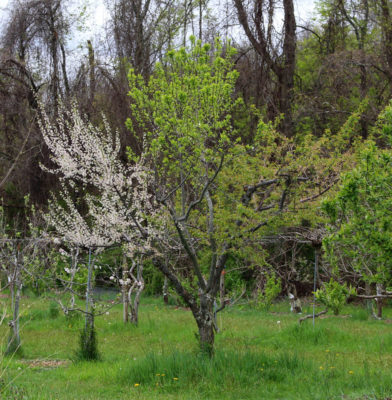
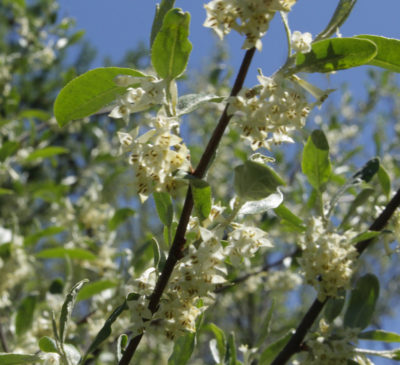
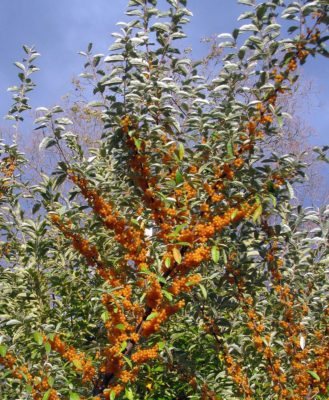 (Autumn olive is often confused with Russian olive, E. angustifolium, a close relative that is more tree-like, less invasive, and with sweet, olive-green fruits. Another equally attractive, fragrant, tasty, and soil-building plant is gumi, E. multiflora, not well known but closely related to the other “olives.”)
(Autumn olive is often confused with Russian olive, E. angustifolium, a close relative that is more tree-like, less invasive, and with sweet, olive-green fruits. Another equally attractive, fragrant, tasty, and soil-building plant is gumi, E. multiflora, not well known but closely related to the other “olives.”)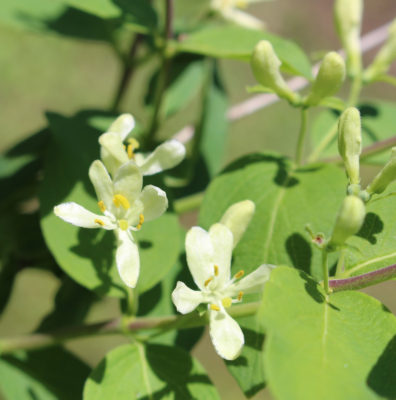
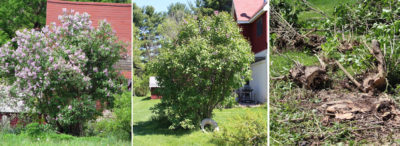
 Offer an explanation and, if correct, you’ll be in the pool of readers, one of whom, randomly selected, gets sent a free copy of my book
Offer an explanation and, if correct, you’ll be in the pool of readers, one of whom, randomly selected, gets sent a free copy of my book 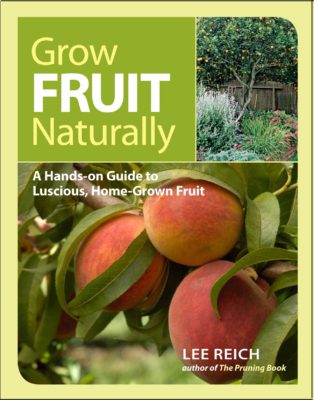
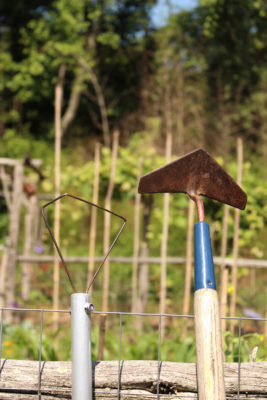
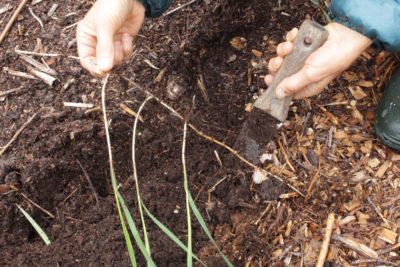
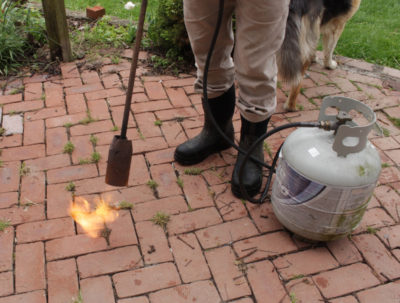 It’s a tribute to the tenacity of weeds how they manage to take root or sprout, and then thrive, in the small openings between adjacent bricks. Even in the small cracks between the bricks and the masonry wall of the house. Some of those “weeds” are actually welcome there — such as the wild columbines that send up thin stalks at the ends of which hover orange and yellow blossoms whose rear-pointing spurs gives the flowers the appearance of flaming rockets.
It’s a tribute to the tenacity of weeds how they manage to take root or sprout, and then thrive, in the small openings between adjacent bricks. Even in the small cracks between the bricks and the masonry wall of the house. Some of those “weeds” are actually welcome there — such as the wild columbines that send up thin stalks at the ends of which hover orange and yellow blossoms whose rear-pointing spurs gives the flowers the appearance of flaming rockets.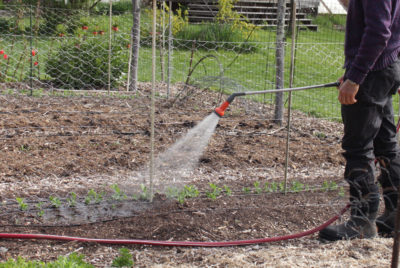 Hand watering also required patience. A light sprinkling of the ground does nothing but wet the surface fraction of an inch. If you care to know, the amount of water needed to wet a soil about 6 inches deep is 3/4 of a gallon per square foot or, equivalently, a one-inch depth of water. And said water needs to be applied slowly enough to percolate into the ground rather than running off elsewhere.
Hand watering also required patience. A light sprinkling of the ground does nothing but wet the surface fraction of an inch. If you care to know, the amount of water needed to wet a soil about 6 inches deep is 3/4 of a gallon per square foot or, equivalently, a one-inch depth of water. And said water needs to be applied slowly enough to percolate into the ground rather than running off elsewhere.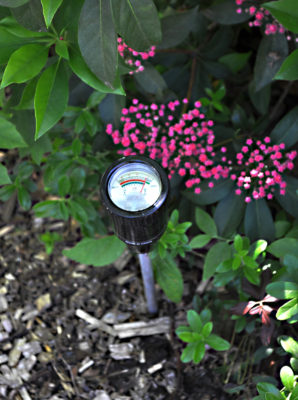
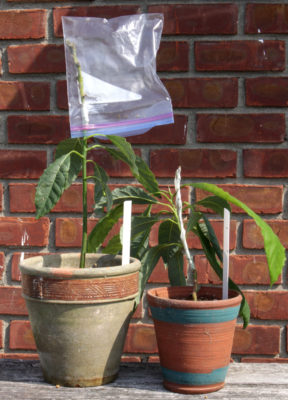
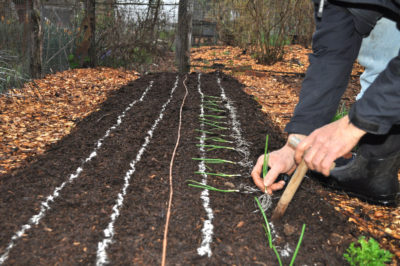 With yesterday’s 75 degree temperatures, urges to plant were satisfied — for that day, at least — by my poking holes into the ground into which I dropped onion plants sown indoors on February 1st. Three-hundred of them in a 20 foot long by 36 inch wide bed. (This was later than the April 21st onion planting date specified in my book, but the weather was cold so I forgot to look at my book.)
With yesterday’s 75 degree temperatures, urges to plant were satisfied — for that day, at least — by my poking holes into the ground into which I dropped onion plants sown indoors on February 1st. Three-hundred of them in a 20 foot long by 36 inch wide bed. (This was later than the April 21st onion planting date specified in my book, but the weather was cold so I forgot to look at my book.)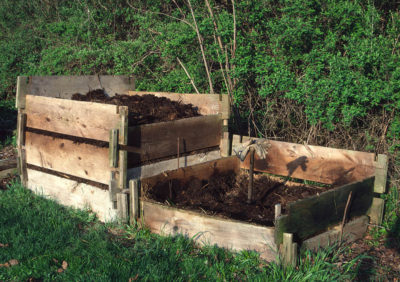
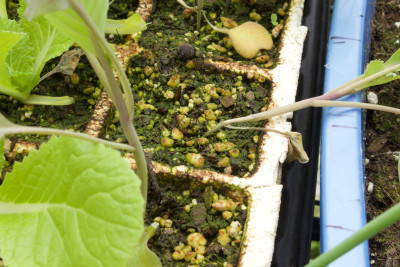
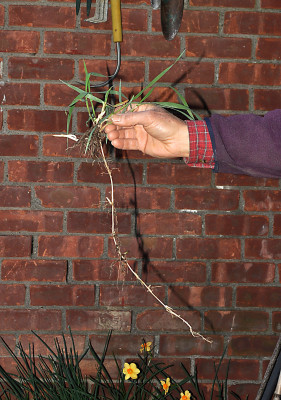
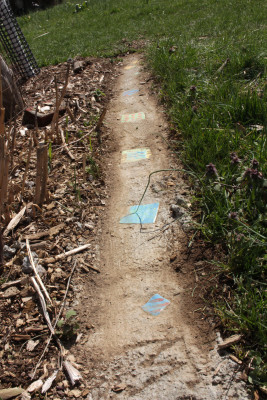 My plan is to sacrifice the coral bells and pull out every rhizome I can find. In soft soil this time of year, long pieces can be lifted with minimum breakage or soil disturbance. A mulch with a few layers of newspaper, topped with a wood chip mulch (part of weed management, as described in my book Weedless Gardening) will suffocate any overlooked rhizome pieces trying to sprout. In the absence of other plants among which the rhizomes could sprout, mulching alone can do in quackgrass, as it did in my second garden.
My plan is to sacrifice the coral bells and pull out every rhizome I can find. In soft soil this time of year, long pieces can be lifted with minimum breakage or soil disturbance. A mulch with a few layers of newspaper, topped with a wood chip mulch (part of weed management, as described in my book Weedless Gardening) will suffocate any overlooked rhizome pieces trying to sprout. In the absence of other plants among which the rhizomes could sprout, mulching alone can do in quackgrass, as it did in my second garden.